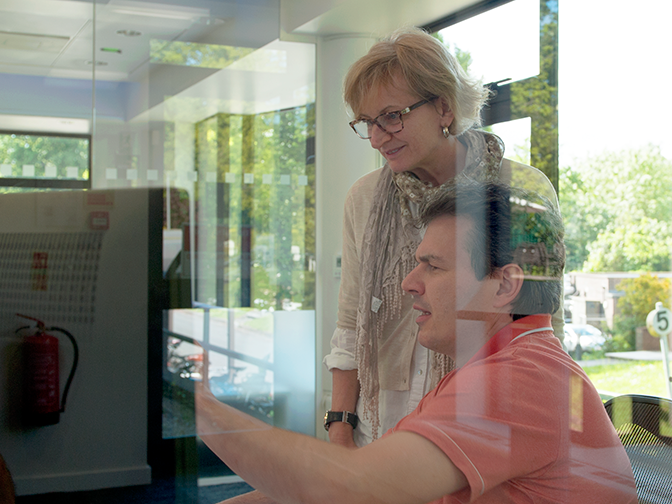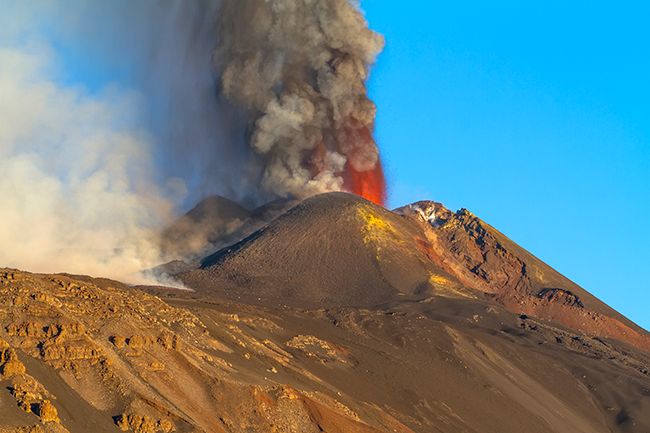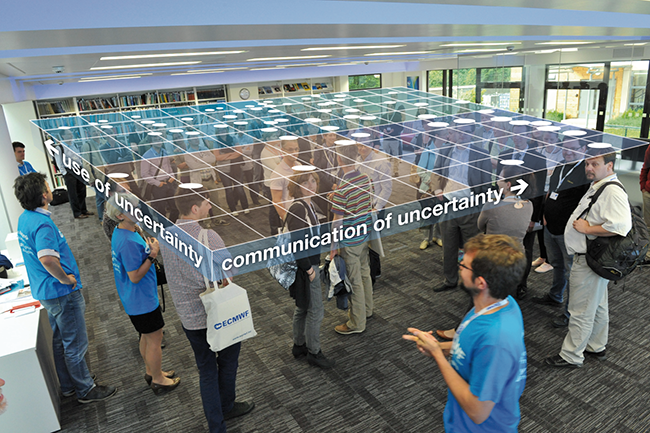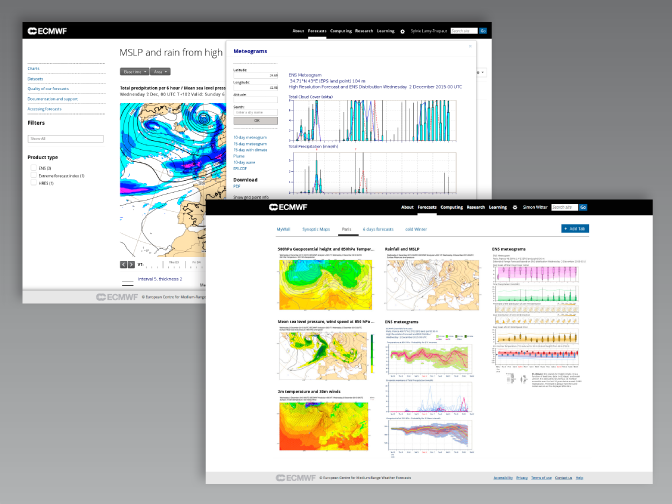

Nearly 100 users of ECMWF forecasts are meeting at the Centre from 6 to 9 June to discuss new approaches to the evaluation of weather predictions.
Dr Anna Ghelli has been in charge of the annual event since 2012.
In addition to ‘Using ECMWF’s Forecasts’ (UEF), Dr Ghelli also organises the training course on the ‘Use and interpretation of ECMWF products’ due to run in October for the third time this year.
In between these events, much of her time is devoted to liaising with the Centre’s 34 Member and Co-operating States to keep them up to date on the latest developments at ECMWF.
Her role as ECMWF’s International Liaison Officer requires Dr Ghelli to have extensive knowledge of all the Centre’s activities.
It helps that for 15 years she worked at ECMWF as a scientist specialising in the quality and reliability of meteorological observations. “Even then I loved the element of international collaboration my work involved,” she observes.
Dr Ghelli is always keen to innovate to make collaboration as effective as possible. This year’s UEF meeting will feature a side event close to her heart, devoted to the position of women in science.
From volcanos to weather
Having grown up in Italy, the country of Mount Vesuvius and Mount Etna, Dr Ghelli’s dream was to study volcanology. But her physics degree course in the northern city of Turin did not offer that option.
“Instead I specialised in meteorology, since that also concerns the environment and has a direct bearing on people’s lives, and I came to love it,” she recounts.

Mount Etna is an active volcano on the east coast of Sicily in southern Italy, shown here erupting in October 2013. (Photo: etvulc/iStock/Thinkstock)
Her PhD in data assimilation for numerical weather prediction (NWP) at the ETH Zurich was followed by a postdoc in diagnostics at the University of Reading and a year at a regional meteorological service in Italy.
In 1998, she joined ECMWF. As a scientist in the Centre’s Evaluation Section, Dr Ghelli’s main task was to assess model performance. Work on collecting high-density precipitation observations brought her into contact with a wide range of national meteorological services (NMSs).
She also collaborated closely with the WMO on developing alternative verification methods.
Using ECMWF’s Forecasts
The topic of this year’s UEF meeting ties in well with her previous work: the meeting is dedicated to future approaches to evaluating forecasts of high-impact weather.
One of those approaches is user-oriented verification.
“User-oriented verification is about finding measures of forecast quality that relate to the impact the forecasts have on people, for example whether or not the forecasts correctly predicted the start and the end of a major heat wave,” Dr Ghelli explains.
Dr Ghelli has been keen to devote each event to an overarching theme “so that there is a focus to the discussions”. For example, last year’s event was dedicated to the topic of quantifying and communicating uncertainty in weather forecasts.

Many of the activities at UEF meetings are interactive. The 2015 event focused on uncertainty in weather forecasts.
The target audience used to be mainly forecasters from NMSs, but that has changed in recent years.
“Now the idea of the meeting is to provide a forum for networking between ECMWF data users both from the private and the public sector, and to learn from each other,” she says.
“We are also keen to receive feedback from all our users on how they use our products and what they think of them.”
An innovation at this year’s UEF is to hold a lunch for ‘women in science’ to encourage diversity in organisations and increase awareness of possible biases in recruitment.
“It’s an ambitious goal but if we don’t start we’ll never get anywhere.”
Dr Ghelli is looking into the possibility of holding future user meetings jointly with another organisation “so that there is an exchange of ideas between users from both organisations”.
“The point of these meetings is partly to inspire new ideas among users and also at the Centre,” she notes.
Visits
Coordinating the Centre’s international liaison efforts also includes running a three-year cycle of visits to Member and Co-operating States.
The purpose is to update staff at NMSs and other organisations in ECMWF’s Member and Co-operating States on what the Centre has been doing and on its plans for the next three to five years in terms of products, computing services and model development.
Each visit is tailored to the needs of the host country and may include training activities.
“For instance, recently I was in Portugal and they were keen to have training in ecCharts, a suite of web applications enabling the interactive exploration of ECMWF forecast data, so we provided that,” Dr Ghelli observes.

Visits to Member and Co-operating States are tailored to the hosts’ needs and may include training activities, such as on the use of ecCharts, shown above.
For more specialised requests, such as information on ECMWF’s wave forecasts, she takes experts in those areas along or organises remote participation by experts via WebEx.
“One of the challenges of the role is to support the staff who go out on those visits, another is to convey a coherent message to all Member and Co-operating States,” she notes.
Training
During her time in the Evaluation Section, Dr Ghelli got involved in lecturing at training events held at ECMWF. She soon moved into coordinating and leading those training activities.
“I asked myself how we can innovate to better address the learning needs of users in our Member and Co-operating States,” she says.
Today Dr Ghelli’s responsibilities include the training course on the ‘Use and interpretation of ECMWF products’, which targets forecasters from across Europe.
The course is so popular that this year for the first time a ‘train the trainer’ version was run. “The idea is to enable participants to use the training channels in their own organisations to spread knowledge about ECMWF’s products.”

Activities during this year’s ‘Use and interpretation of ECMWF products’ course included a game on using probability in decision-making.
To keep her training methods up to date, Dr Ghelli works with the WMO and EUMETCAL, a European programme for cooperation in training in the field of meteorology, whose NWP working group she chairs.
“With this group we are developing e-learning modules on ensemble forecasting,” she says.
For the future, Dr Ghelli envisages a course which explores how forecasts can be put to good use in a variety of sectors, such as transport, emergency management or humanitarian work.
“There is a great range of potential applications out there. Weather prediction can be useful to society in so many ways.”
Top photo: Anna Ghelli and her colleague Ervin Zsoter
